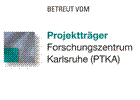|
|
|
|
|
|
|
Approach
The simulation environment consists of three layers:
- Detailed Model for Frequency Domain Analysis (1. Layer)
The structural and kinematic model of the machine tool includes a model of the actuation and control setup for all feed axes, but without
capabilities to include position control inputs (and thus motion). Furthermore, forces obtain from process simulations will be included into
the analyses' load cases. These complex models will be analyzed for frequency-dependent behavior
to obtain information about the static and dynamic compliance of the structure, which is the starting point for topology and
parameter optimization.
- Abstract Model for Time Domain Analysis (2. Layer)
For simulations and optimization in the time domain, the models of the 1. layer (which are finite element, multibody models, or hybrid
flexible multibody models) need to be simplified such that simulations over longer time-periods can be carried out. By combining the
structural models with a simulation-NC, which simulates the actuator system controls, it is possible to study the machine's behavior in
motion, however not in real-time.
- Abstract Model for Real-Time Analysis (3. Layer)
Research towards real-time simulation of machine tools has to be seen over a longer period of time because there is still a lot of research
to be carried out. The aim is to combine models of the machine's structure and actuation system with a real NC system to study and optimize
NC unit and to be able to adapt these complex systems to the machine tool even before it has been built.
→ The project partners...
|
|











